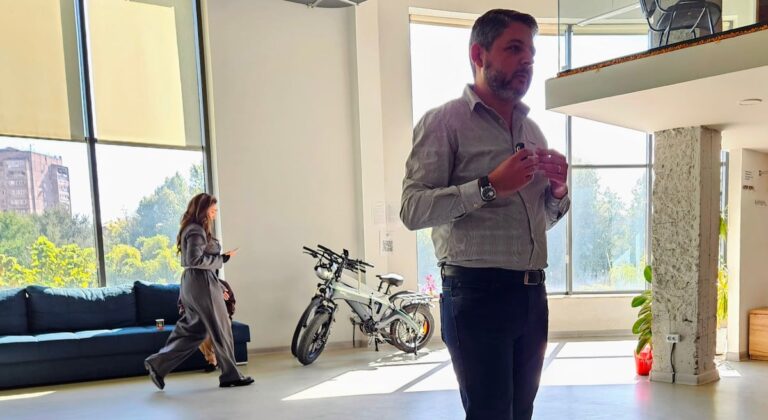John Haltiwanger, an economist at the University of Maryland, said in a recently published study that one of the unexpected effects of the coronavirus was that entrepreneurs concluded they needed to make changes in their lives. As a result, new business projects have increased rapidly. “Applications for new businesses have surged alarmingly during the COVID-19 pandemic, with the largest increases in industries rooted in pandemic-era changes to work, lifestyle, and business,” the report said. Many of the efforts to date have failed. Arthur Manukyan, director of business development at Prelaunch.com, estimates that “up to 70%” fail. That being said, he believes he can reverse this number.
From startups to giants like Amazon, no one was spared this debacle. Amazon had to discontinue its first smartphone (Fire Phone) just 15 months after its release. To reduce this high failure rate, Manukyan’s US-based international company is part of a group called Crowdfunding Formula, which brings together experts in fundraising, idea development, e-commerce creation, advertising and public relations. is. Their model is aimed at new entrepreneurs. “We invest in risk and in our team. There are no fees, only fees. If the idea succeeds, we succeed,” Manukyan sums up.
One of the keys to TCF is to include consumers in every step of the project. Potential users who are interested in a product are integrated into a group that participates in its design, pricing, and possible improvements and modifications. “There is no similar methodology. It is based on real data. In other models, the client participates in exchange for money, and the client perspective is biased. find out who they are and make it work,” explains Mariam Hanbarzumyan, co-founder of Prelaunch.com.
TCF’s network of companies assumes all risks without using public funds and guides entrepreneurs every step of the way. “Good ideas have to find a way to do it, and that’s our job,” Manukyan says. Failure rates are reduced because the ability to face challenges, modify strategies, and reverse incorrect initial approaches is a collective goal.
Benoit Macq, an engineer at the University of Leuven in Belgium, is not involved in TCF, but agrees that planning should include end users throughout the process. “In order to have technology, people have to want it and use it,” he says. Mr. Macq connected with TCF leaders in Yerevan, Armenia, where he attended the World Congress of Innovation and Technology and the Digitec double-header international conference. EL PAÍS was invited along with 12 other international publications.
Cass Sunstein, a Harvard professor and researcher and advisor to former President Barack Obama, adds another aspect to keep in mind when developing a project. He calls it “sludge” and defines the concept as “a curse that prevents us from taking advantage of technological advances, whether intentionally or not.” “This is a barrier to access,” he explained during WCIT, adding that it involves not only bureaucratic factors but also psychological, economic and resource-based factors.
Students of the Armath program display a robot prototype at the Digitec conference in Yerevan.
Education is also important, as physicist, mathematician, DigiTech organization member, and technology entrepreneur Artavazd Minassian explains. Mr. Minassian introduced Armath, a public-private initiative focused on introducing science, technology, engineering, and mathematics to children ages 10 to 18 through extracurricular activities. “Fifty percent of program participants are targeting their careers in these fields,” he says.
The conference has already given birth to projects such as Cifora, a platform for emergency decision-making, and Titan, an application that connects 11,000 clients with the necessary service providers. Fast Shift, which specializes in all areas of digital development, is one of the proposals realized here. There’s also Krisp, which uses artificial intelligence to change your accent to be more understandable to listeners. and Sada, a cloud business services provider.
Carlota Galvan, Head of Environment, Social and Governance at HBX Group, who was not present at the Yerevan International Conference, said failures include lack of a clear vision, alignment with the general plan, firm direction, and resources. , or adaptation to market needs. “Projects have to be very agile and flexible and able to adapt to constant changes in the market and users, otherwise they quickly become obsolete,” she says.
She emphasizes the importance of testing products, assessing risks and opportunities, establishing strategic alliances, involving all participants, and continuously monitoring projects. “You have to understand why and what you’re doing,” Galvan says.
Travel tech company HBX Group applied these criteria to develop tourism microdestinations in collaboration with rural communities in Mexico. “We are working with seven cooperatives to start with a small pilot. This will allow us to tailor our approach depending on the outcomes and specific aspects of each community. With the success of this pilot, , which gave us the confidence to expand the project to other countries in the near future,” says Galvan.
Sign up for our weekly newsletter and get more English news coverage from EL PAÍS USA Edition


